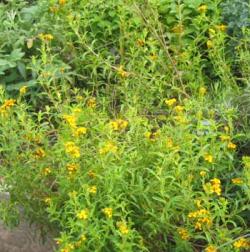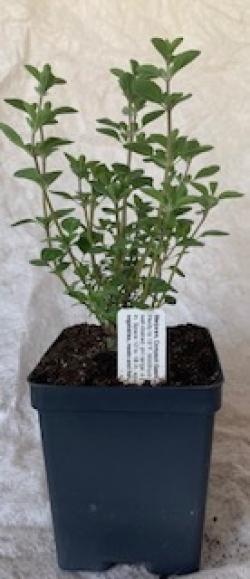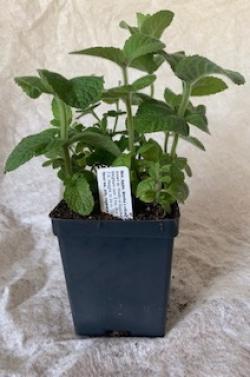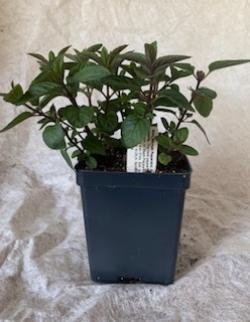Your search for Herbs begining with the letter M returned 22 items.
A | B | C | D | E | F | G | H | I | J | K | L | M | N | O | P | Q | R | S | T | U | V | W | X | Y | Z
Displaying items 1 thru 15
Marigold, Mexican.
Tagetes minuta. Annual hardy to 30°F. Height 6 to 15 feet. Although the plant produces small pale yellow flowers in clusters just before frost, it is the foliage that South Americans find useful. Aromatic green leaves from the plant are ground with peanuts, hot peppers, and olive oil to make a pesto-like sauce that is eaten with potatoes.Last Seed Source: www.richters.com
Marigold, Sweet/ Texas Tarragon.
Tagetes lucida. Also called Texas Tarragon. Often used as a tarragon substitute. Hardy to 15°F. Height to 2 feet. Small yellow flowers may appear in mid to late summer. Use to flavor meat, poultry, fish, vegetables, eggs, salads.Last Seed Source: www.johnnyseeds.com
Marjoram, Compact Greek.
Origanum majorana 'Nana'. Hardy to 20°F. An introduction of the National Arboretum's Herb Garden, grown from seed obtained in Greece. It contains the marjoram aroma you expect, but the plant is shorter with distinctly gray leaves. Much hardier, and more disease free, than the typical marjoram. About 10 inches high and as broad.Marjoram, Sweet.
Origanum majorana. A tender perennial hardy to about 30°F, marjoram is a sweet, mild oregano that is suitable for flavoring beans, cabbage, carrots, cauliflower, eggplant, spinach, potatoes, beef, chicken, eggs, lamb, many other comestibles. Plants are upright to about 20 inches tall and 12 inches broad.Last Seed Source: www.johnnyseeds.com
Mint, Banana.
Mentha arvensis. Perennial. Hardy to -20°F. Uniquely scented leaves smell slightly of banana. Lavender flowers sprout along upper stems. Grow in a pot to contain spreading habit. Keep soil moist, but well-drained. Full sun to part shade. Use in tea, salads, meat dishes and potpouri.Mint, Corsican.
Mentha requienii. Few plants hug the ground as closely as does this mint, a Baby Tears look alike. Its tiny, green heart shaped leaves are strongly scented of pennyroyal and peppermint. It is not always winter hardy in our area.Mint, Curly Or Crisped.
Mentha xpiperata. This mint first came to my father with a whispered story of intrigue, a "double mint" plant smuggled from France. True or not, there was no reason to smuggle it through customs; it has been in American herb gardens for decades with good reason. While technically a peppermint, it has retained the odor from its spearmint parent. It has decorative puckered leaves with crinkled edges that recommend it as a garnish. It is also nice in mint juleps and iced tea.Mint, DOUBLE ( Red Stemmed Apple).
Mentha x gracilis 'Madeline Hill'. A true "double" mint. Both spearmint and peppermint can be detected in this one of a kind mint.Mint, English Pennyroyal.
Mentha pulegium. This low growing ground cover with tiny green leaves comes with a heady, pungent aroma, making it a natural for potpourri. It is commonly an ingredient in homemade flea collars for dogs or stuffed into animal bedding. It is the least hardy of the mints. This mint is not recommended for internal consumption.Last Seed Source: www.germaniaseed.com




